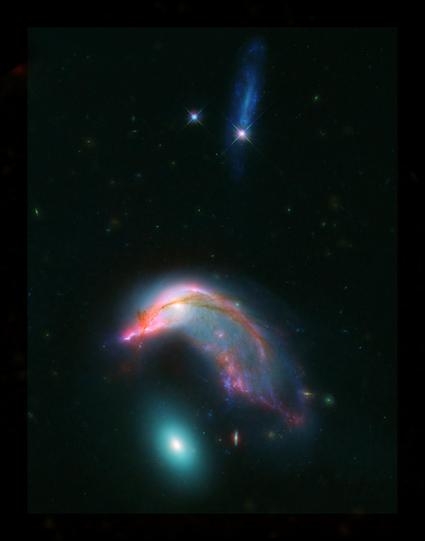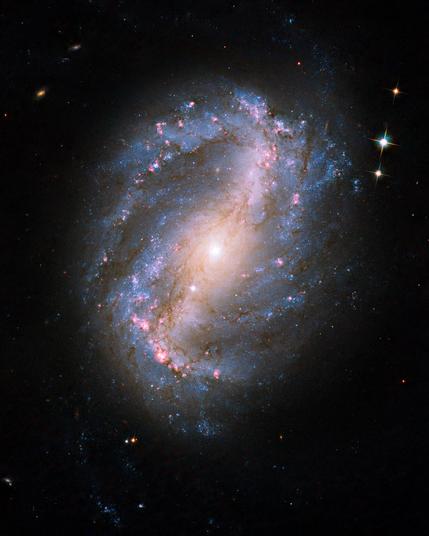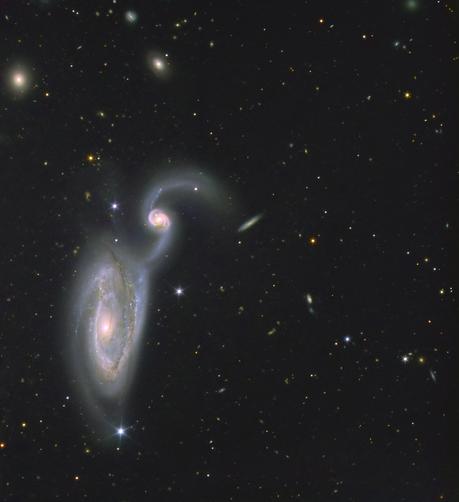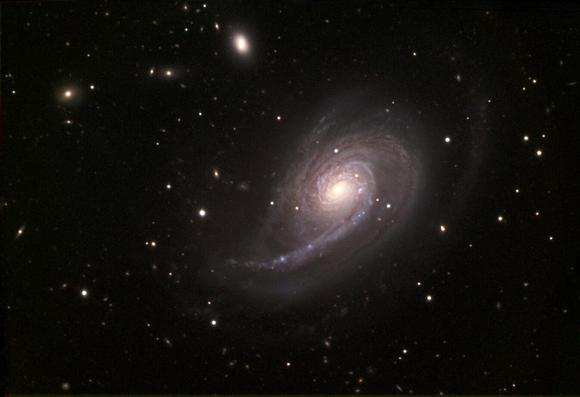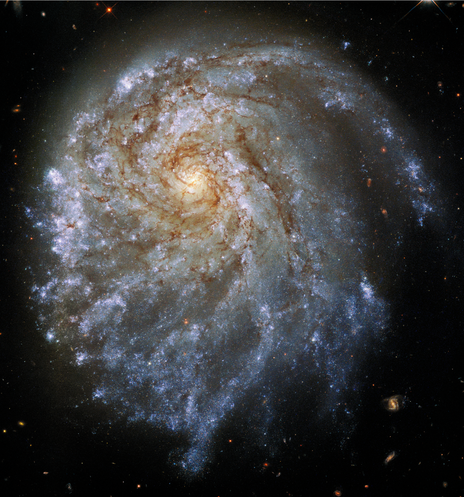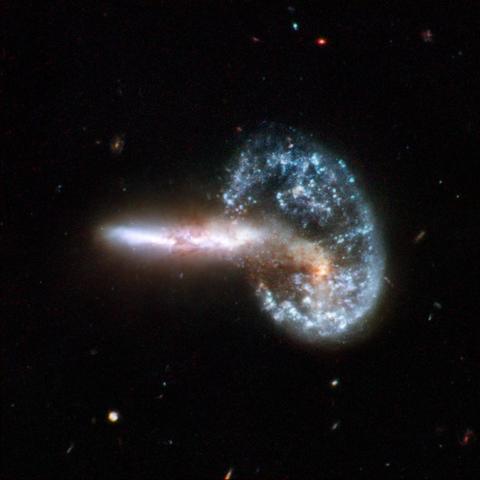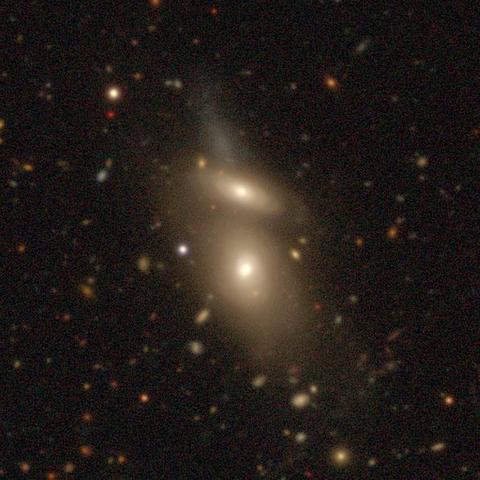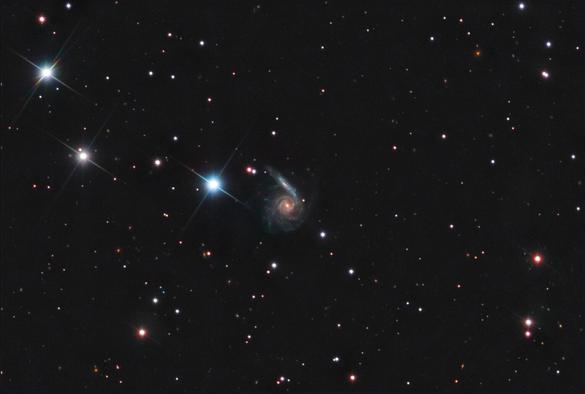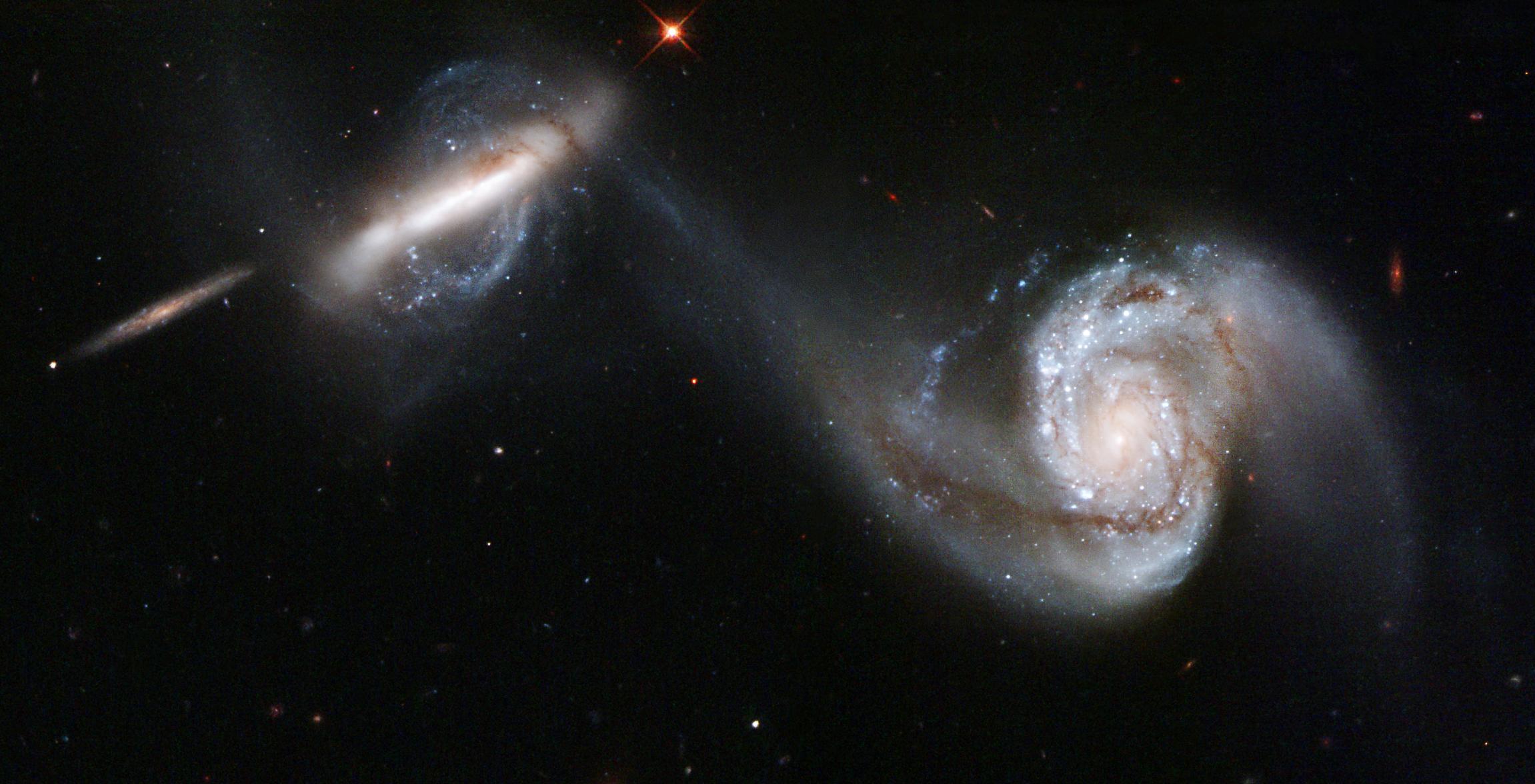Spitzer and Hubble image of Arp 142, also known as NGC 2936, NGC 2937, and UGC 5130, or the Penguin and the Egg.
In the "Penguin", dust and gas appear as red filaments at the longer wavelengths of infrared light seen by Spitzer. The "Egg" is nearly featureless and made of older stars. The lack of dust suggests it lost its reservoir of gas and dust needed to new stars.
Credit: NASA, ESA, STScI, AURA, JPL-Caltech
Source: https://www.spitzer.caltech.edu/image/ssc2018-05a-arp-142-the-penguin-and-the-egg
